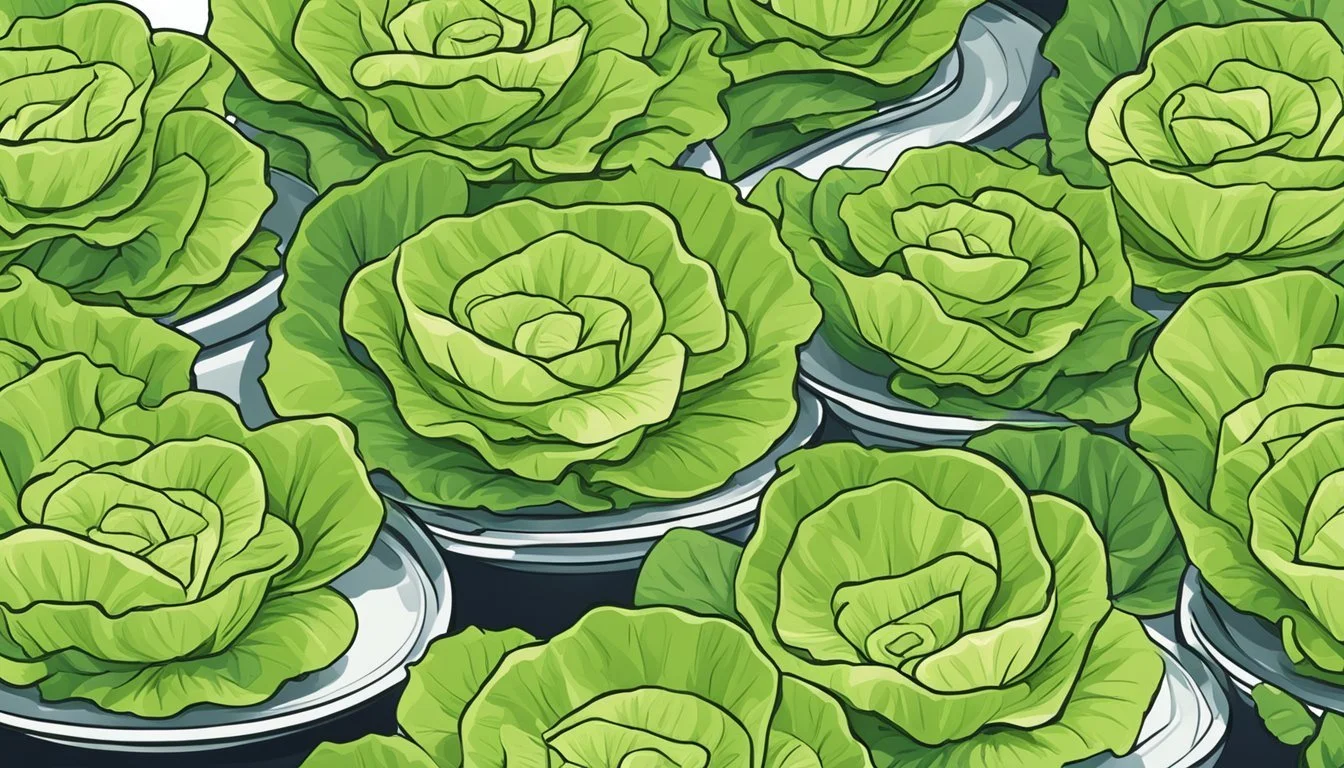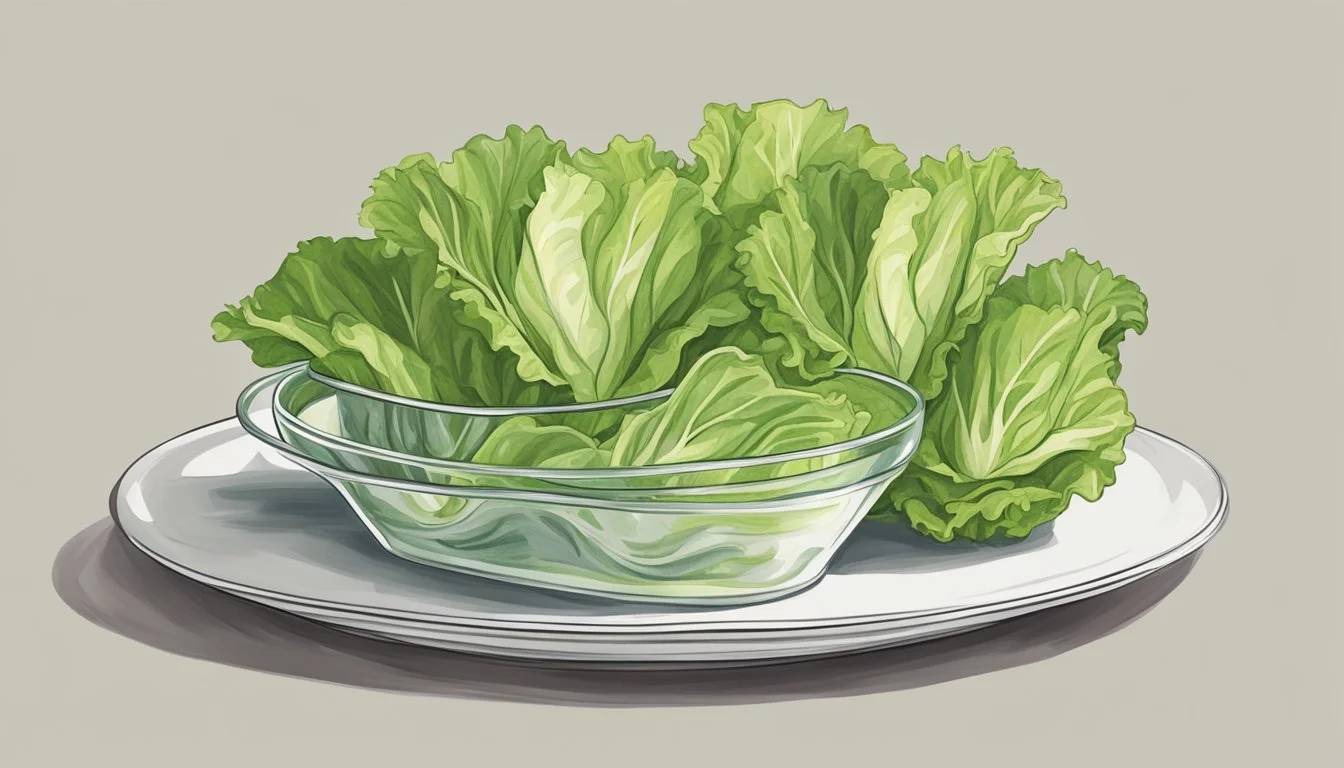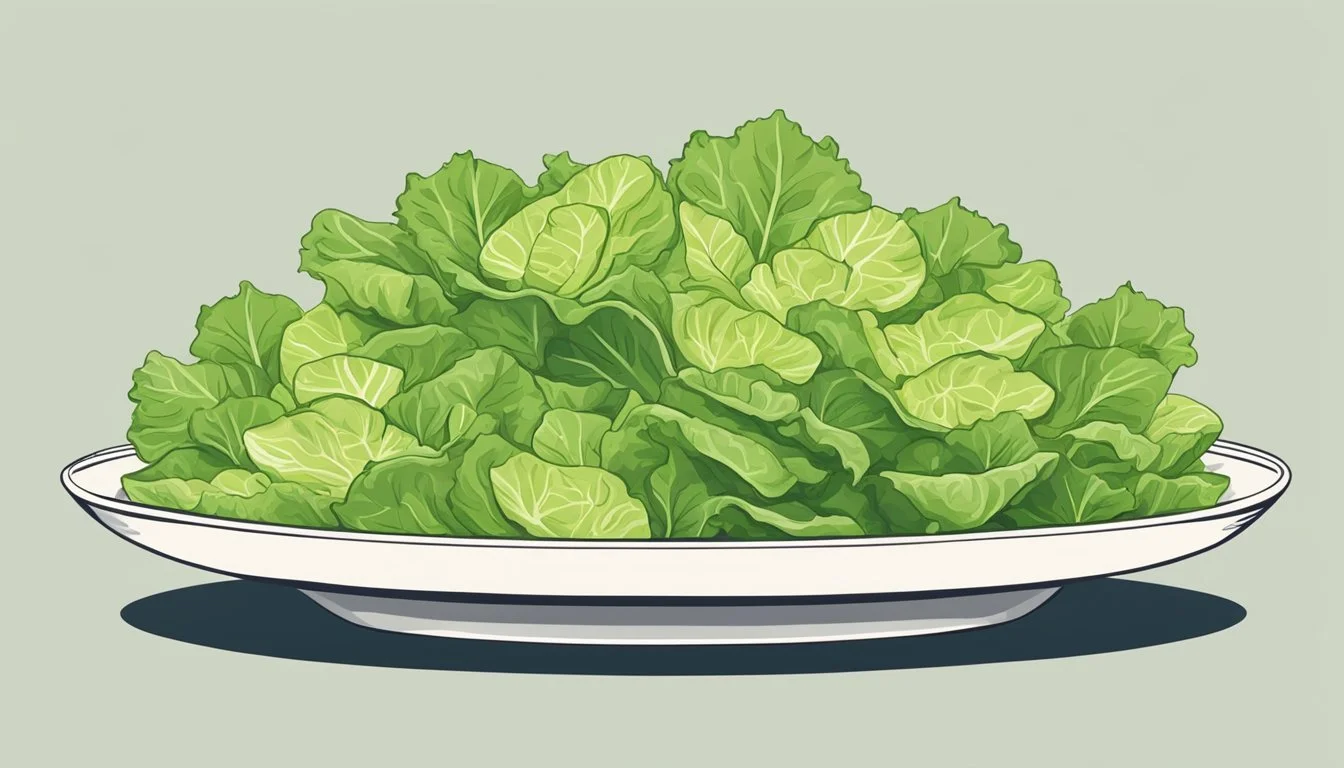How Many Cups of Lettuce Per Day is Too Much?
Understanding Safe Consumption Limits
Lettuce is often praised for its low calorie content and high water composition, making it a popular choice for those seeking to incorporate more greens into their diet. However, questions arise regarding the consumption limits of this leafy vegetable. While it is rare, it is possible to ingest an excessive amount of lettuce, leading to potential health concerns such as carotenodermia—a harmless condition where the skin takes on a yellowish hue due to high levels of beta-carotene.
Nutritionists recommend a daily intake of fruits and vegetables, with leafy greens like lettuce playing a key role in this dietary guideline. A balance of five servings of fruits and vegetables is suggested to reduce the risk of chronic diseases and to support overall health. Given that a serving size of leafy greens is about one cup, adding a salad to one's daily meals can significantly contribute towards meeting these nutritional recommendations.
Determining the exact threshold for 'too much' lettuce can be challenging due to individual dietary needs and the overall balance of one's diet. Generally, a moderate consumption of lettuce, within the context of a varied diet, is unlikely to approach excessive levels. However, it remains essential for individuals to consider their entire nutritional intake to avoid imbalances that could arise from a disproportionate emphasis on a single food item, even one as healthy as lettuce.
Understanding Lettuce in Your Diet
Lettuce is a staple in many diets, known for its crisp texture and adaptability in various dishes. In the category of leafy greens, lettuce is notable for its health benefits, offering a range of nutrients while being low in calories. As a vegetable, lettuce can be a key component in achieving the recommended daily intake of fruits and vegetables.
Varieties of Lettuce:
Iceberg
Nutritional Profile: (Per 1 cup serving)
Nutrient Iceberg Romaine Butterhead Leaf Vitamin A Low High Moderate High Vitamin C Low Moderate Low Moderate Fiber Low Moderate Low Moderate
Lettuce is predominantly water, which can contribute to hydration. The water content, combined with fiber, can provide a feeling of fullness with minimal calories, which may support weight management.
The intake of lettuce should contribute to the overall daily servings of vegetables, with experts commonly suggesting at least five servings of fruits and vegetables per day. Each serving of leafy greens like lettuce can add vital vitamins and minerals such as Vitamin A and iron to one's diet.
While there is no absolute guideline for the maximum amount of lettuce one should consume, it's important to maintain a variety in one's diet to ensure a comprehensive nutrient intake. Consuming a broad spectrum of vegetables alongside lettuce ensures a balanced intake of nutrients essential for health.
Nutritional Profile of Lettuce
Lettuce, a widely consumed leafy green, is prized for its nutritional benefits, containing essential vitamins like vitamin A and vitamin K, minerals, and antioxidants.
Comparison With Other Vegetables
In the realm of leafy greens, lettuce stands out for its hydration properties due to its high water content. When compared to denser vegetables like broccoli or carrots, lettuce has a lower calorie count and a different nutritional makeup. It's particularly known for being a low-calorie option with a high content of certain vitamins.
Vitamin A: This nutrient is crucial for vision, immune function, and skin health. Compared to other vegetables, lettuce provides a substantial amount of vitamin A, with types like romaine offering higher levels than iceberg.
Vitamin K: Essential for blood clotting and bone health, lettuce is an excellent source of this vitamin, often exceeding the nutrient density found in other common vegetables.
Types and Nutrient Density
Different types of lettuce have varying levels of nutrients, affecting their overall nutrient density.
Iceberg Lettuce:
Vitamin A: Available but in lesser amounts compared to darker-leafed varieties.
Vitamin K: Present but not as dense as other types of lettuce.
Minerals: While it contains minerals like potassium and folate, they are in relatively low quantities.
Romaine and Darker Leaf Lettuces:
Vitamin A: These varieties are richer in vitamin A, often attributed to the higher levels of beta-carotene, which the body converts to vitamin A.
Vitamin K: Dark leaf lettuces typically contain higher levels of vitamin K.
Antioxidants: They are abundant in antioxidants, which are important for preventing damage to cells.
Minerals: Romaine lettuce also offers more potassium and folate compared to its lighter counterpart, iceberg lettuce.
Type of Lettuce Vitamin A Vitamin K Potassium Folate Antioxidants Iceberg Lower Lower Moderate Low Lower Romaine Higher Higher Higher Higher Higher
In terms of mineral content, potassium stands out for its role in maintaining proper heart function and regulating fluid balance in the body. Folate, important for DNA synthesis and repair, is another mineral present in lettuce, with amounts varying across different types.
Daily Intake Recommendations
When determining the appropriate daily intake of lettuce, it's essential to consider both the age and lifestyle of an individual and the amount that can be deemed excessive.
Role of Age and Lifestyle
For adults, the USDA Dietary Guidelines suggest a general target of eating two and a half to three cups of vegetables per day. This target can fluctuate based on one's age, sex, physical activity level, and overall health. For instance, teenage boys generally require more vegetables due to their higher calorie needs, often consuming at least three cups of vegetables daily. Adults who are more active may also need higher amounts to support their lifestyle.
How Much Is Too Much
While it is rare, consuming excessive amounts of lettuce might lead to negative side effects, such as carotenodermia, which is a yellowing of the skin caused by high levels of beta-carotene. It’s usually harmless and resolves once intake levels are reduced. As part of the recommended five servings per day of fruits and vegetables noted in the dietary guidelines, an individual may include lettuce as one of these servings. However, due to its high water content and low-calorie count, one would need to consume an impractically large quantity of lettuce for it to be harmful. A varied diet that includes a mix of different vegetables is encouraged for overall health.
Health Implications of Overconsumption
Eating excessive amounts of lettuce can lead to certain health complications, even though it is generally considered a healthy food. Understanding the threshold for what constitutes overeating is critical to maintaining dietary balance and avoiding adverse health effects.
Identifying Excess Intake
An individual might be consuming too much lettuce if they experience increased occurrences of digestive discomfort or are eating lettuce to the exclusion of other essential foods. Lettuce is low in calories and high in water content, which makes it difficult to overconsume to the point of caloric excess or weight gain. However, neglecting a balanced diet due to a very high intake of lettuce could result in nutrient deficiencies.
Potential Health Risks
Overeating lettuce may lead to several health issues:
Digestive Issues: While lettuce is good for digestion due to its high fiber content, overconsumption can cause digestive problems such as bloating and gas.
Nutrient Imbalance: Excessive intake of lettuce at the expense of a varied diet may lead to a lack of other nutrients, impacting overall health.
Moderation is key, just as with any dietary habit. There might not be direct links between eating too much lettuce and diseases like heart disease, cancer, or diabetes, but neglecting dietary variety can put one at risk of nutrient deficiencies that may contribute to these conditions. Overeating lettuce to the point of carotenodermia, which presents as a yellowish skin tint due to high levels of beta-carotene, is rare but signifies excessive consumption. Maintaining a balanced approach to eating lettuce among a diverse array of foods is sensible to mitigate these risks.
Incorporating Lettuce Into a Balanced Diet
When aiming for a balanced diet, it's important to know that lettuce can be a versatile vegetable and its consumption should complement a variety of other foods to achieve a nutritious meal plan.
Other Healthful Greens
Spinach: This green is rich in iron, calcium, and vitamins A and C.
Kale: Offers a robust flavor and is a source of multiple vitamins and minerals.
These veggies, along with lettuce, contribute to the recommended 1.5 to 3 cups of leafy greens one should aim for on a daily basis. These greens can be a part of salads or cooked dishes, supporting a healthy and balanced diet, beneficial for weight loss due to their low-calorie content.
Creative Serving Ideas
Salad: A traditional way to enjoy lettuce, by tossing various types together with an array of chopped fruits and vegetables for a nutrient-dense meal. Cooking Methods:
Grilled: Lettuce halves can be drizzled with dressing and grilled for a smoky flavor.
Sautéed: Chopped lettuce can be quickly sautéed, enriching its texture and taste.
Experimenting with these methods adds variety to meals, making raw vegetables more enticing, and possibly leading to a more sustainable consumption of produce in a diet aimed at health and weight loss.
Understanding Risks and Benefits
Although lettuce is generally lauded for its health benefits, consumers should consider both the nutritional value and potential risks associated with excessive intake.
Role in Preventing Diseases
Lettuce supplies a variety of vitamins and minerals that can benefit one's health. For instance, eating lettuce can contribute to the daily value of vitamin A, which is pivotal for a healthy immune system and eye health. Additionally, the consumption of vegetables like lettuce is linked to a lower risk of chronic diseases. This is partly due to the presence of antioxidants that combat free radicals, which may otherwise contribute to conditions such as heart disease and cancer.
Importance of Variety in Vegetable Intake
Variety is key when it comes to vegetable intake. While lettuce can be a valuable part of one's diet, relying solely on it may lead to missed opportunities to obtain other important nutrients. Different vegetables offer a range of nutrients that support various bodily functions, including bone and muscle health. For instance, dark leafy greens are often higher in calcium and iron, which are crucial for bone strength and carrying oxygen in the blood, respectively. By including a variety of vegetables, one can ensure a more comprehensive intake of nutrients.
Lettuce Preparation and Storage Tips
When preparing lettuce, the goal is to ensure cleanliness while preserving its crispness. Begin by tearing or cutting the lettuce into desired sizes, steering clear of metallic knives that might cause browning. Then, immerse the leaves in cold water to remove any dirt. A salad spinner can be employed post washing to remove excess moisture effectively.
Storage is crucial for maintaining the freshness of lettuce. Dry the lettuce thoroughly, as excess moisture can promote spoilage. Wrap the leaves gently in paper towels to absorb residual moisture. Here's a simple table outlining the storage process:
Step Description 1 Wrap dry lettuce leaves in a paper towel 2 Place in a sealable plastic bag or storage container 3 Expel as much air as possible from the bag 4 Store in the crisper drawer of the fridge
Avoid storing lettuce near fruits that emit ethylene gas, as this will hasten deterioration. A typical serving size for a salad may range from 1 to 2 cups of lettuce, depending on the individual's dietary requirements and the type of lettuce.
Regarding preparation methods beyond salads, such as steamed, baked, or included in a stir-fry, lettuce usually isn't suited for these cooking processes due to its high-water content and delicate structure, which causes it to wilt rapidly with heat. Nonetheless, for such preparations, using more robust greens like kale or spinach is advisable, while reserving lettuce for cold dishes or garnishes to ensure optimal texture and flavor.
Dietary Considerations and Medical Advice
When incorporating lettuce into one's diet, it is essential to be aware of the nutrients it provides and to understand when it may be necessary to seek medical advice regarding its consumption. Lettuce offers various vitamins and minerals, but like all foods, should be eaten in moderation and as part of a balanced diet.
Lectins and Nightshade Vegetables
Certain vegetables, including some types of lettuce, contain lectins, which are proteins that can be resistant to digestion and may affect the absorption of nutrients. It is also noted that some individuals have sensitivities to nightshade vegetables, although lettuce is not within this category. Moderation is key, as excessive intake of foods with high lectin content can potentially lead to digestive discomfort.
Seeking Professional Guidance
Individuals with specific dietary restrictions or health concerns should always seek medical advice from a healthcare professional. The Centers for Disease Control and Prevention (CDC) and other health authorities provide guidelines on healthy eating patterns. A healthcare provider can offer personalized advice that considers an individual's health history, ensuring a diet that supports their unique health needs.





